Learn about the Feng Shui plants and how to make a Feng Shui garden in this informative article. You can also make changes in your existing garden according to the feng shui.
Start with the parts of your garden you would like to change, grow the Feng Shui plants there and apply the principles given below and see how it works.
What is Feng Shui
Feng Shui is an art of reaching harmony in life, a practice that comes from the China. It is believed that if a place (home, garden, office or anywhere) is arranged according to the Feng Shui guidelines it remains, prosperous, peaceful and harmonious.
Principles of a Feng Shui Garden
A Feng Shui garden is a garden that is arranged in 9 areas or zones. Each represents a universe, a realm of life through forms, objects and colors. The Feng Shui garden must respect nature and be in harmony with it.
The 5 Elements
 In Feng Shui, there are five basic elements– Fire, Water, Metal, Earth and Wood. They maintain harmony in the world around us and influence our lives. Therefore, in the feng shui garden design, these five elements must have to be in order in their zones.
In Feng Shui, there are five basic elements– Fire, Water, Metal, Earth and Wood. They maintain harmony in the world around us and influence our lives. Therefore, in the feng shui garden design, these five elements must have to be in order in their zones.
Divison
 According to the Feng Shui practice, the garden (or a home) must be divided into the nine energy zones. Draw a free-flowing square similar to the shape of your garden and divide that square into 9 equal parts.
According to the Feng Shui practice, the garden (or a home) must be divided into the nine energy zones. Draw a free-flowing square similar to the shape of your garden and divide that square into 9 equal parts.
The map will begin from your garden gate, consider the direction of your gate as North and align the feng shui map (bagua) according to it. The central area or zone will be called Tai Chi (the source of energy and life). The other eight areas or zones will surround this.
Dividing Garden into Nine Feng Shui Zones
 Each zone represents an area of life and you must give space to the appropriate elements there.
Each zone represents an area of life and you must give space to the appropriate elements there.
North
The North is the zone that represents the fame, career and the flow and mystery of life. It symbolizes the winter season. It must have to be in the front of the entrance. Its dominant element is water and its color is blue, violet, black, and other dark colors. The shape is sinuous and items to integrate here are a water feature or pond, rocks, water plants, dark foliage plants and blue flowers.
North East
The Northeast represents wisdom and knowledge. The dominating element here is the earth and its colors are yellow, orange and cream. The shape is square. Garden benches, pots, and statues can be placed here. As the Northeast direction represents the wisdom, it is the place for meditation and yoga.
North West
Northwest part symbolizes support, friendship, guidance and represents the fall season. The dominant element here is metal and the colors to be there mainly are white, gray, golden brown, and silver. Plants like jasmine, gardenia or magnolia can be planted here. Rocks, gravels, and metallic objects are best suited here.
South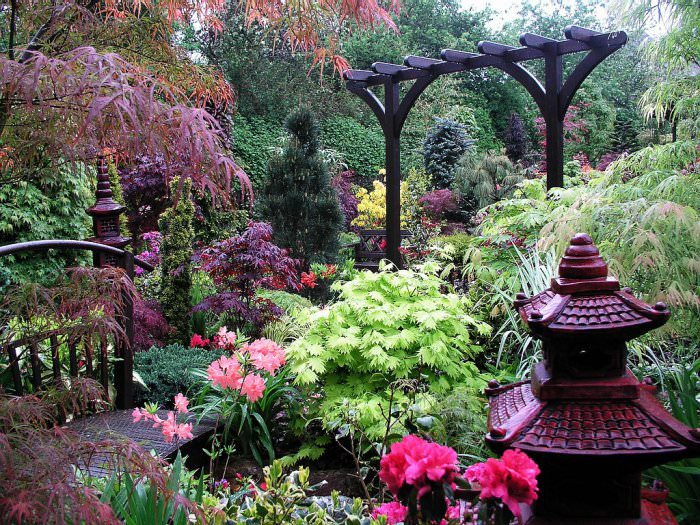
The South is the direction of success and fame and represents the summer. The dominant element here is fire and the main colors here are red, orange, purple and pink. Plants that have red or other similar colors like orange, pink, crimson, purple must be grown there. The shape of the South zone is the triangle.
South East
South East symbolizes the wealth and represents the season spring. Its dominant element is wood and its color is green and brown. You can grow here the plants that are related to this color.
South West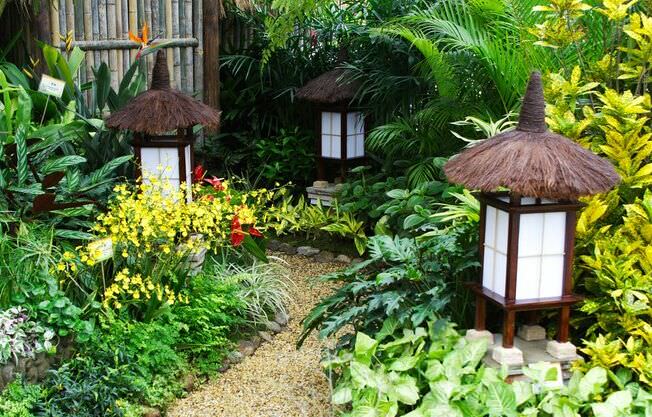
The South West is the zone that symbolizes love, pureness, and attraction between a couple. The dominant element here is Earth and the colors are to be yellow, orange, pink and other. The shape of the Southwest area is square and in this area you have to keep your garden furniture and objects in pairs to symbolize the parity.
East
This zone represents health and the season spring. Its dominant element is wood whose color is green (symbol of harmony and balance). Its shape is the rectangle. This is the area where you can grow medicinal plants, herbs, foliage plants and large trees like palms, plums, and bamboos.
West
This is the family area. Its main element is metal and its color is white (that symbolizes purity, freshness, and harmony). You can also use the gray and silver color here. The shape of the West Zone is the circle. Put some pots, chimes, rocks and wrought iron furniture. Plant shrubs here. Grow flowers of different colors together with whiter ones. Magnolia, jasmine, and lily of the valley are perfect for this area.
Central zone
Keep the central zone open and less cluttered as it is the most prominent point. This is the Tai Chi area. The key element here is earth and its color is yellow. This area represents the unity, harmony and balance. It connects all areas of the Feng Shui garden. This should be kept clean and maintained regularly.
Feng Shui Garden Design
A Feng Shui garden should not be overloaded, otherwise, Chi (energy of life) will circulate poorly. Keep the design simple.
To maintain the flow of energy, you must promote movement in the garden. Make curved paths and edgings. Invite butterflies, bees, and birds. Put feeders, grow fruit trees and flowers to attract them.
Furthermore, statues and sculptures also attract positive energy. Their size must be proportional to the garden. The large pots and urns are the holders of luck and abundance. So prefer the larger ones.
Water is an essential element in the Feng Shui garden. It is a symbol of prosperity. It takes place in the form of stream, waterfall or pond and it must be there in the appropriate zone.
The garden must be open, full of brightness and natural light. Walkways and entrances must not be blocked by any object or a tree. To bring nature, large rocks and gravels must be used.
Feng Shui Garden Plants According to Elements
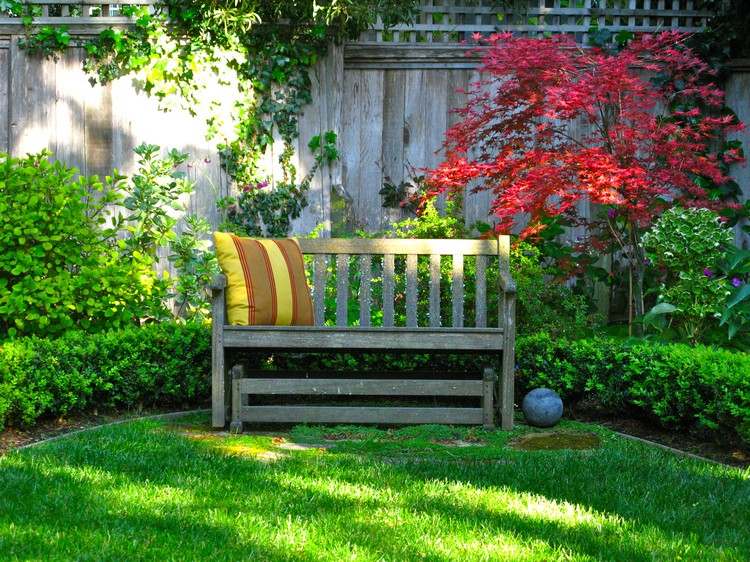
The Feng Shui garden is full of positive energy and provides the perfect harmony of all the five elements. The plants you grow in your garden must be according to these elements. We offer you some examples of the plants that best represent the five elements.
A Few Popular Feng Shui Plants
- Bamboo
- Peony
- Maple Tree
- Plum
- Orchid
- Chrysanthemum
- Iris
- Lily
- Lotus
- Daffodil
- Magnolia
- Jasmine
- Gardenia
- Pine Tree
- Citrus
- Grasses
Element 1. Fire
Feng Shui garden: Plants that represent the Fire
In general, plants with red bark and foliage or those with triangular or conical leaves represent the element fire. One of the most popular and the most beautiful examples of this is Japanese Maple tree (Acer palmatum).
Japanese red cedar (Cryptomeria Japonica), red camellia, boxwood shrub, holly, peonies, geraniums are other preferred Feng Shui plants that represent the fire.
Japanese Maple
Red camellia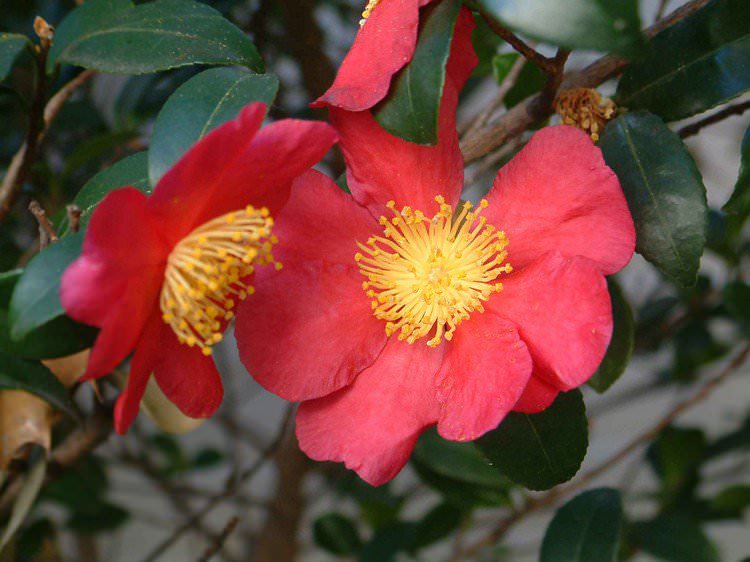
Element 2. Water
Plants that represent water element
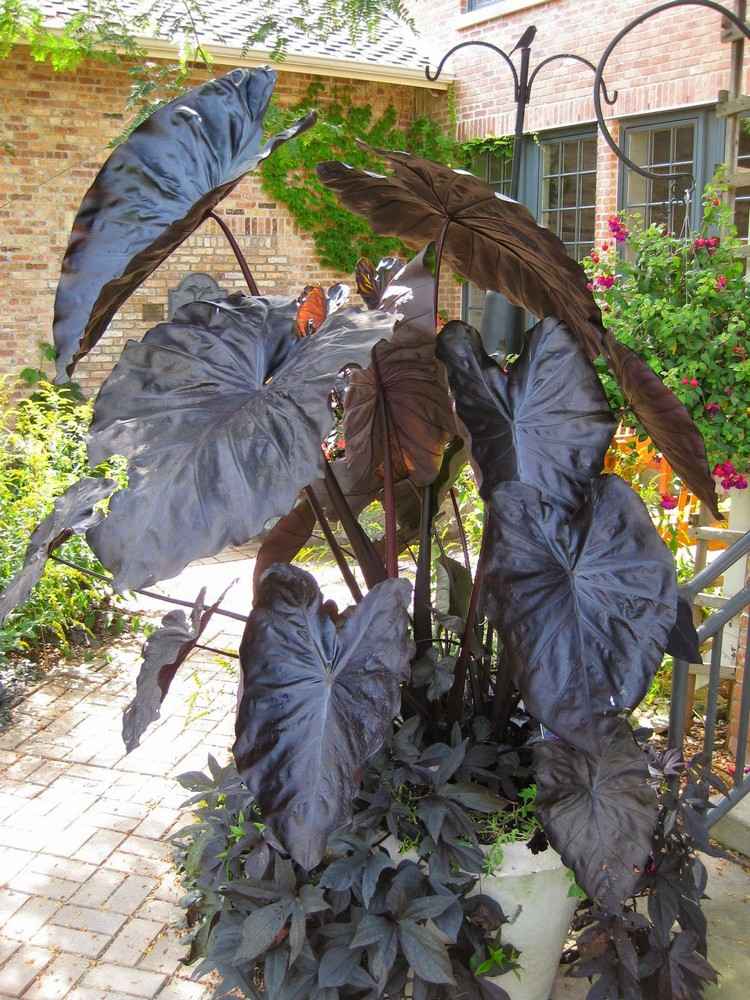
The color of the water element is blue, violet, black. Plants of these colors represent the water element. Here are some examples: Snake’s beard, Heuchera, taro (Colocasia esculenta), sweet potato vine, iris, lily, and lotus.
Heuchera Micrantha
Sweet Potato Vine
Element 3. Metal
Plants that represent the metal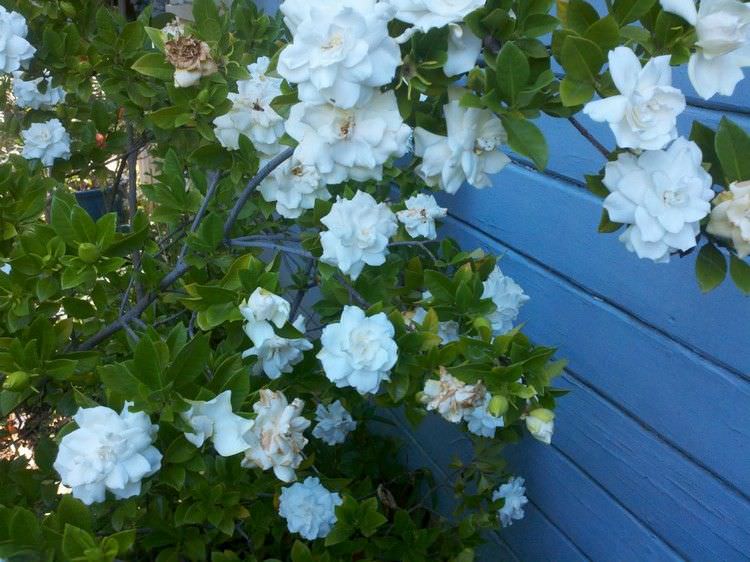
Plants that represent the metal in the Feng Shui garden are mainly those with the round or oval leaves and white flowers or of light golden brown colors. Plants like white hydrangeas, rhododendron, many species of hostas, gardenias, white mums, jasmine and dogwood tree represent the metal.
Hosta
Dogwood Tree
Hydrangea
Element 4. Earth
Plants that represent the Earth
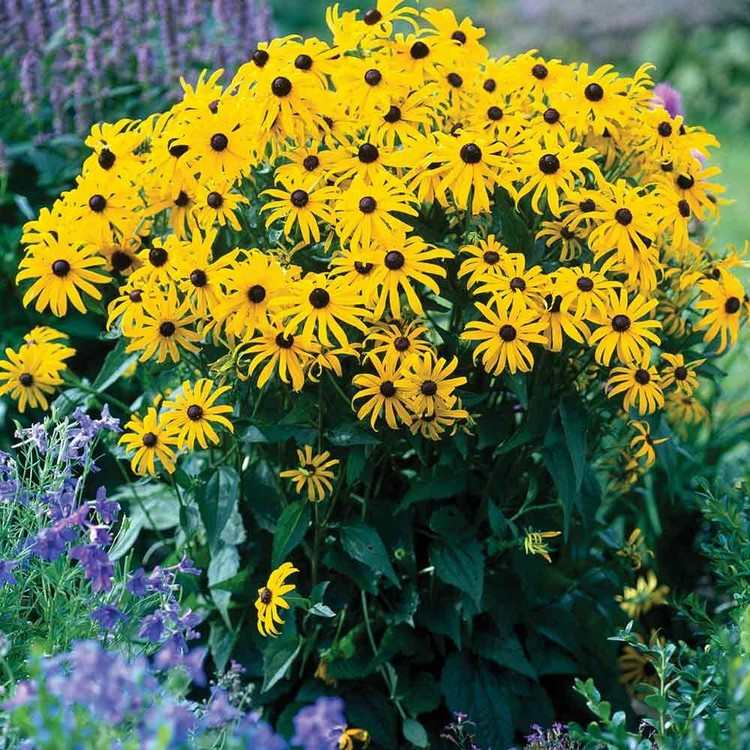
Plants with yellow flowers with similar colors or of earthy tones, those with square shaped foliage represent the Earth element in Feng Shui garden. A few of these plants that represent earth elements are Rudbeckia fulgida ‘Goldsturm’, Japanese laurel (Aucuba japonica), rhododendron, river birch (Betula nigra), Ginkgo biloba tree and grasses such as miscanthus.
Rhododendron ‘Admiral Semmes’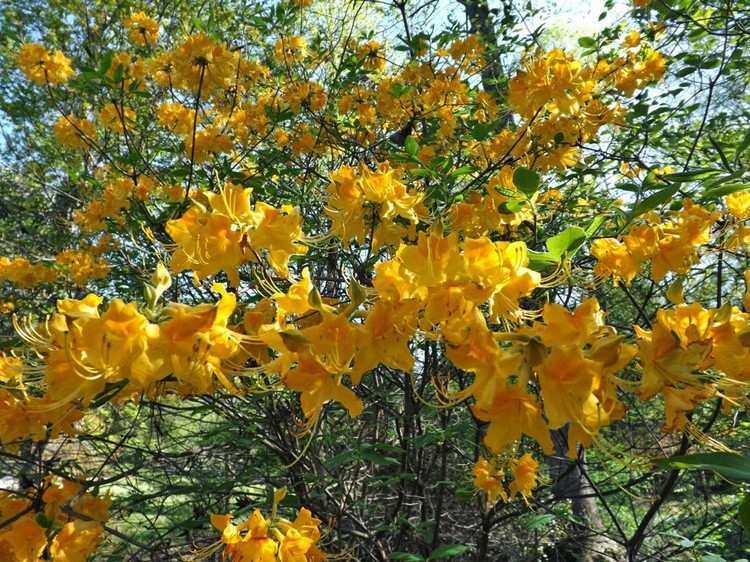
Miscanthus
Betula nigra
Aucuba japonica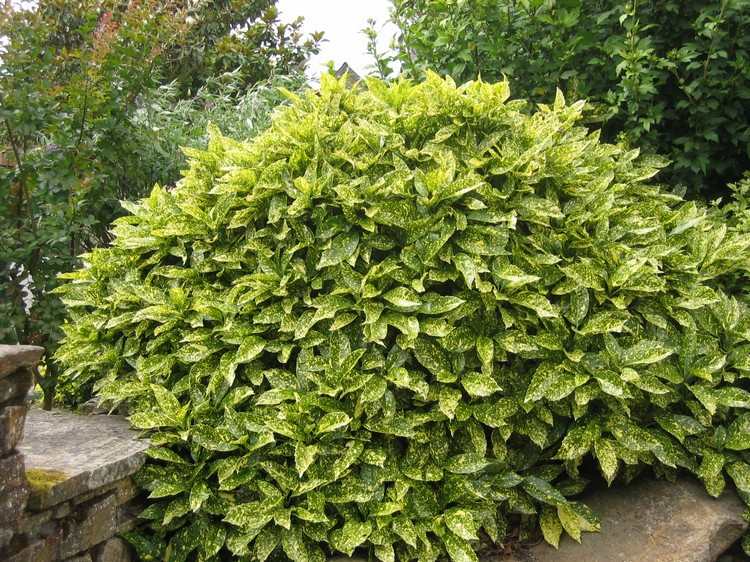
Element 5. Wood
Plants that represent wood in the garden
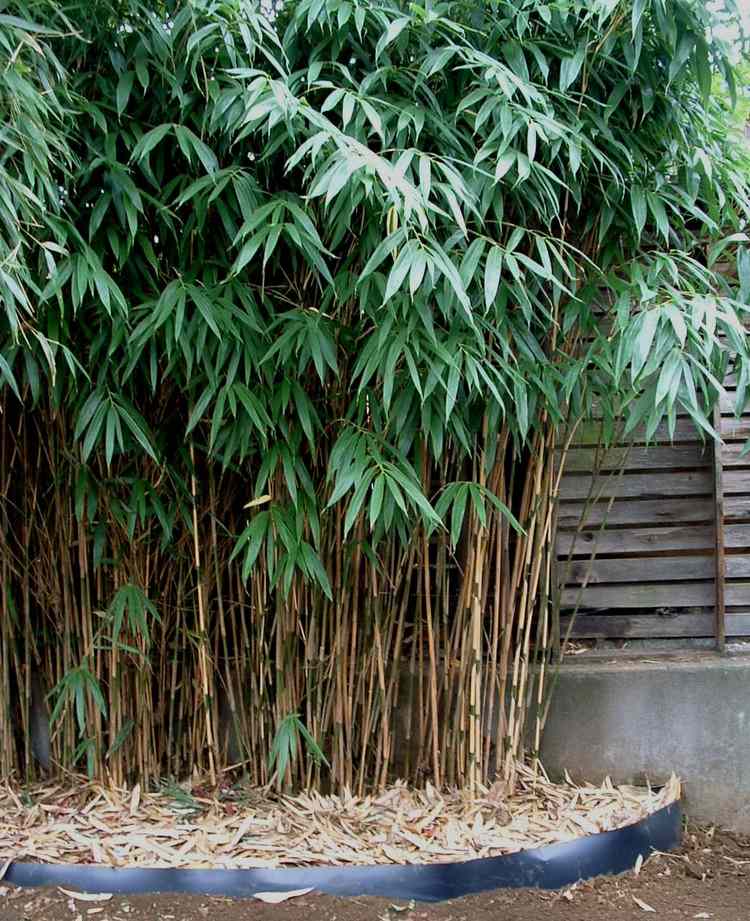
Plants with long thin stems and lush greenery such as Japanese bamboo (Pseudosasa Japonica), best represents the wood element in the Feng-shui garden. Palms, pine tree and other conifers, medicinal herbs and common lungwort (Pulmonaria Officinalis) are the plants well suited to represent the wood element in the garden.
Rosemary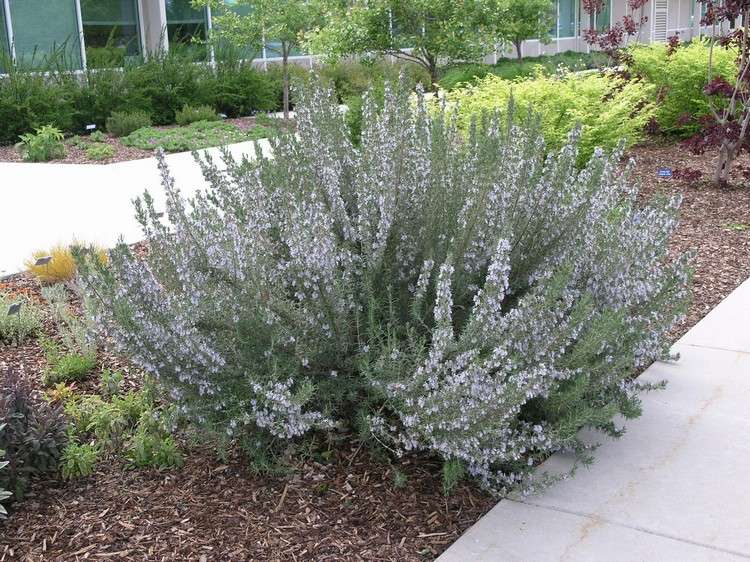
Also Read: How to Make a Japanese Balcony Garden


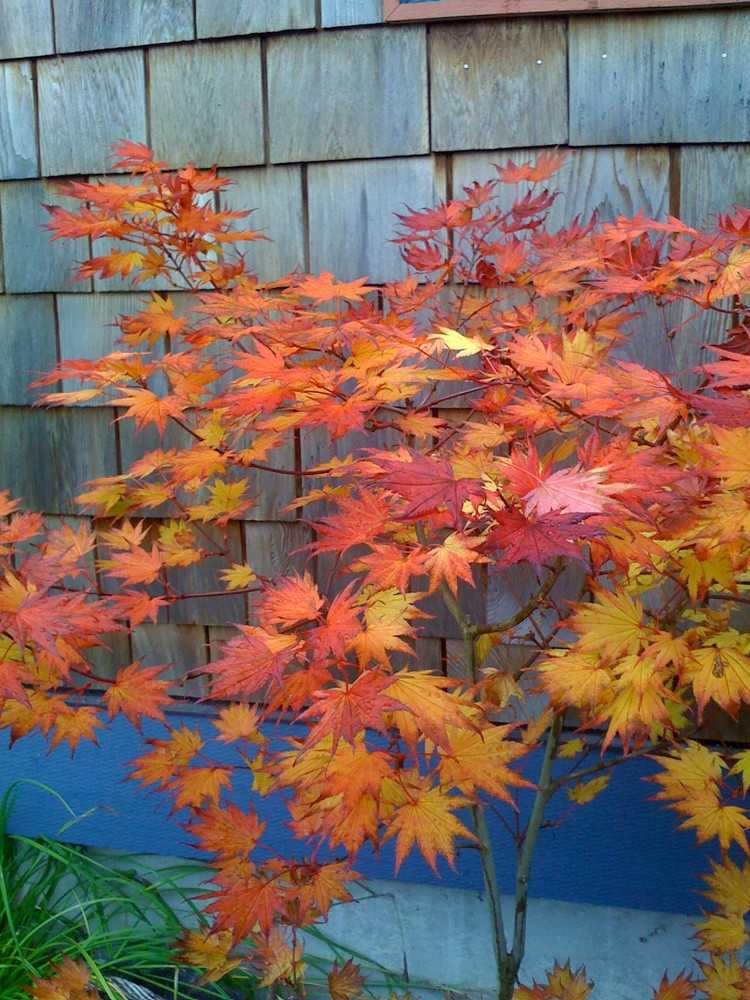


I have a black stem tall bamboo in my last house is it good luck of bad luck to have a black stem tall bamboo… shall I leave it or take it my new home…
My garden needs to be in the left hand side of my property. I would have to have a gate at my neighbors backyard to have the entrance (North) where I can put my water feature on the Northeast side of the entrance. It would land against my house if I am facing the garden for it to be in the Northeast. If I am facing my garden at the gate I want to put the water feature at my right hand corner of the property this appears to land on the Love marriage section. This doesn’t seem to work but I cannot put the door to the garden anywhere else. What do you recommend?
I am not the author, and I know this is a late reply. Still, I think I can help.
North, in this sense is not a true geographical direction. It is, in a matter of speaking, your own north. Wherever you place the gate “becomes” the north of your garden. You base all the other quadrants off of that.
It is the same when practicing Tai Chi. The direction you begin your Tai Chi sequence in becomes “north”, even though it may be south, east, or west.
You get to choose your own north in the garden.
nope, just don’t think this is correct advice. Hopefully the author will reply
Good feng shui design in your garden will help attract nourishing, high-quality feng shui energy to your home, as well as delight all your senses.